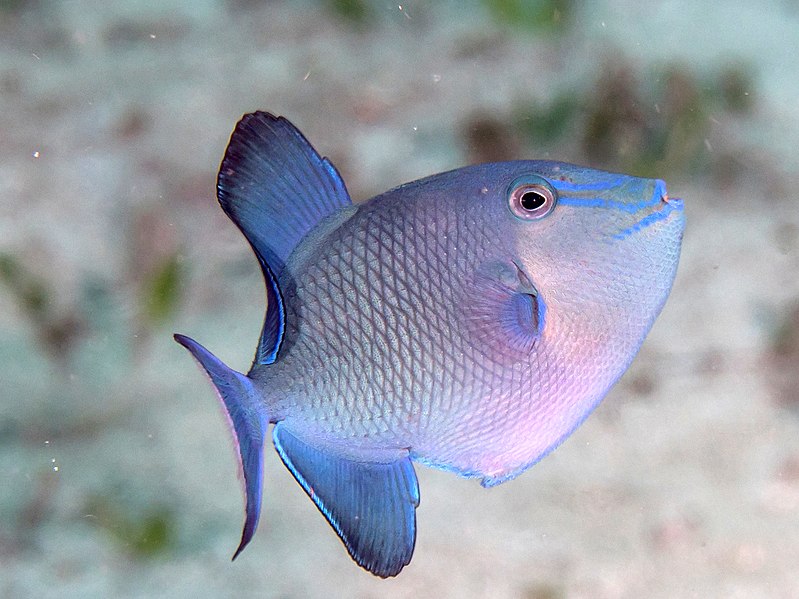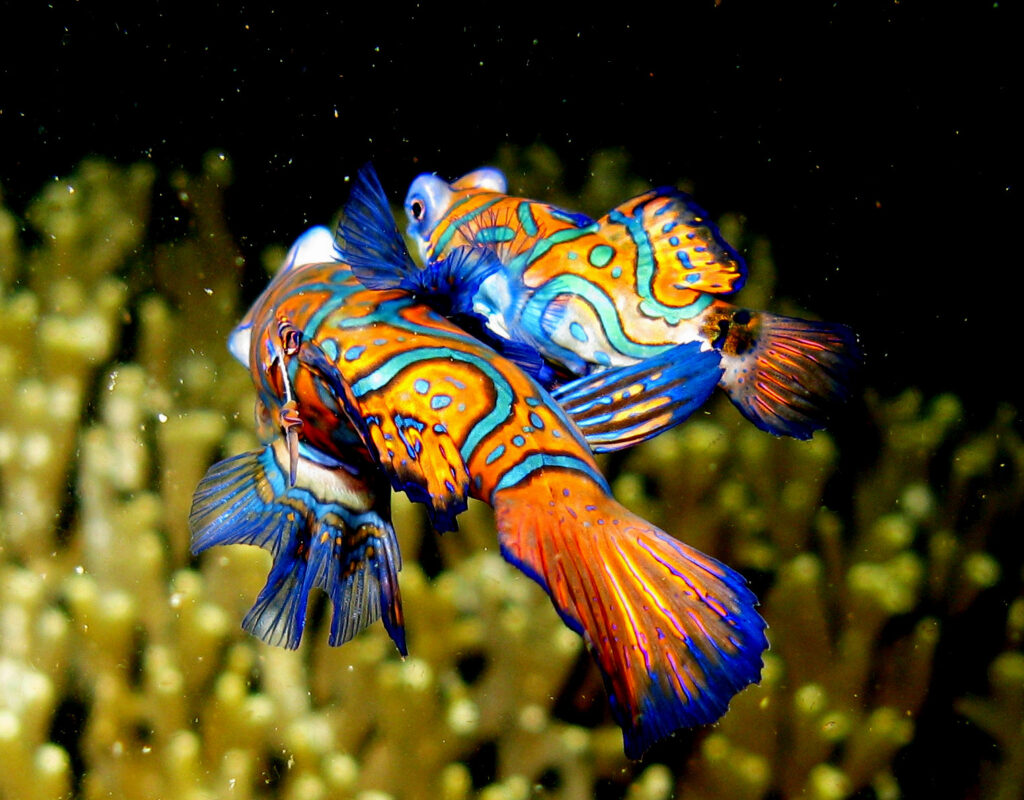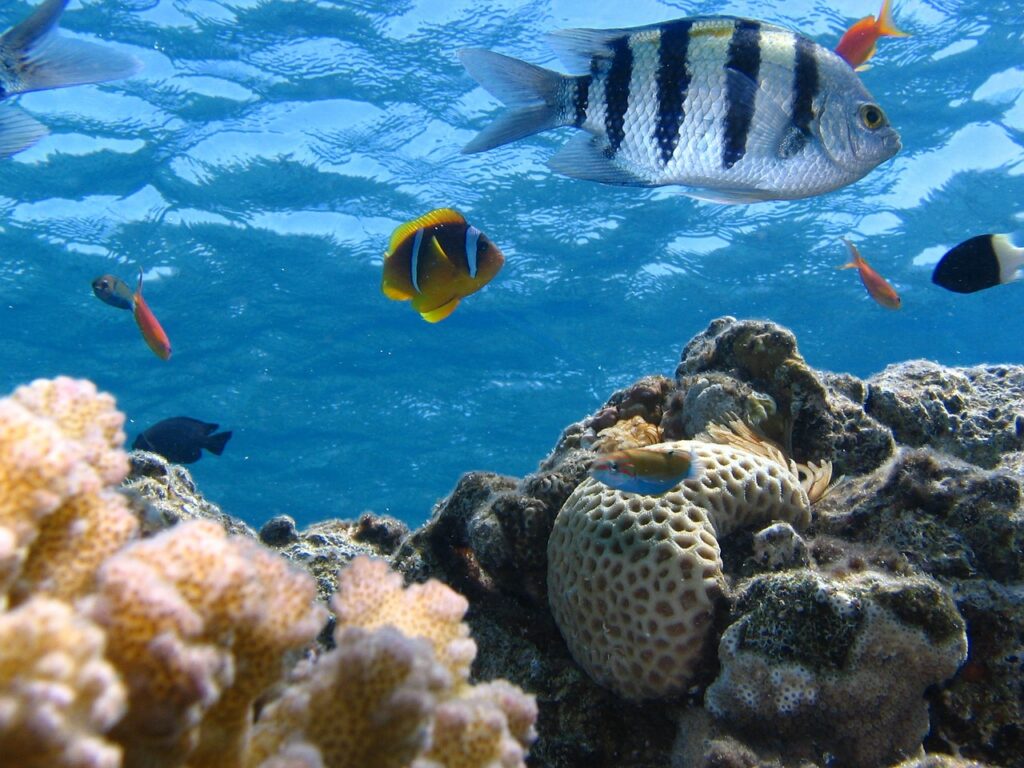Do you want to add some triggerfish to your saltwater tank? Awesome! They’re super cool fish that come in various colors and shapes. But, they do come with some issues.
Unfortunately, not all triggerfish are reef safe. They are predatory fish that feed on invertebrates and small fish. While they don’t eat coral directly, their feeding habits can damage your tank’s ecosystem.
So, should you keep triggerfish in your reef tank? If so, which ones do you choose? Read the rest of this article to find out!
What Does “Reef Safe” Mean?
The term “reef safe” describes fish that cause minimal damage to the tank environment and typically get along with other species in the saltwater tank world. However, there are no genuinely reef-safe species. This is because each species has other fish or invertebrates that they may not get along with due to the predator and prey relationship some species have.
Some fish may even eat the coral or algae that grow in the tank. This may be okay in small amounts but can be detrimental to the ecosystem if too many species are in the tank. You must check that all the species in your tank, both fish and non-fish, can cohabitate together!
What Are Triggerfish?
The name triggerfish describes 30-40 species of tropical fish in the family Balistidae. They grow to a substantial size and require a 125-gallon tank at the very least, depending on the species. Without the proper tank size, they can become sick or aggressive to their tank mates.
Because they are carnivorous, they can be aggressive to other fish. They usually target fish that are smaller than themselves and invertebrates. They have an incredible system for catching their food! Although, it isn’t cool when they eat your decorative shrimp.
The mechanism that helps them catch food is where they get their name! Triggerfish get their name from the trigger mechanism located in two of their three dorsal spines. These spines help the fish hide in the coral reef. This is both for protection and to keep the element of surprise when hunting!
Triggerfish Are Hardy, but Aggressive
While some species can be aggressive to other fish, the triggerfish is typically known as a very hardy fish. They are generally resistant to disease and can handle poor water quality. However, you should choose their tank mates and decor carefully.
Are Triggerfish Reef Safe?
Because they are carnivorous, not all triggerfish are reef safe. Triggerfish can eat smaller fish in your tank. They may cause damage to the coral in your tank while they hunt and hide. However, there are a few species that are considered reef safe!
What Species Are Reef Safe?
There are approximately seven species of triggerfish that are considered reef safe. According to Tropical Fish Magazine, these species come from three different genera: Melichthys, Odonus, and Xanthichthys.
These species are considered reef safe because they tend to be less likely to harass tank mates or damage reefs. These species are also less likely to cause damage to the tank ecosystem because of where they live in the water column. They usually swim on the fringes of the reef, further into open water.
These triggerfish also rely less heavily on fish and large crustaceans in their diet than their cousins. Many of the species on this list eat zooplankton, small crustaceans, or algae. So they will cause significantly less damage to coral than other triggerfish!
Melicthys Triggerfish
The first genus is Melicthys. Three different species are reef safe from this genus. They are Indian (Melichthys indicus), black (M. niger), and pinktail triggerfish (M. vidua). The triggerfish in this genus are most likely to eat zooplankton or algae instead of invertebrates or tank mates.
The black triggerfish (M. niger) is a well-known tank fish from this genus. Fishbase states that these fish are usually found on the outer edges of reefs in the wild, closer to deeper water. Their love of the outer waters is one of the reasons why they are considered reef-safe fish!
Odonus Triggerfish
Only one species from this genus is considered reef safe: the blue Niger (O. niger). Don’t be fooled by its Latin name; it isn’t the same as the black triggerfish (M. niger)! While the blue Niger triggerfish is reef safe, it does come with some drawbacks.
Tropical Fish Magazine says they have a small likelihood of eating both mobile and immobile invertebrates. They can also cause damage to coral reefs when looking for food. But they don’t actually eat the coral. They uproot it while they’re looking for a tasty snack! Despite these things, they are still considered reef safe.
Xanthichththys Triggerfish
This is the last genus with reef-safe triggerfish. It includes the blue chin (Xanthichthys auromarginatus), the crosshatch (X. mento), and the sargassum triggerfish (X. ringens). These species will feed most heavily on zooplankton but may also eat shrimp and other crustaceans.
The crosshatch triggerfish is a magnificent fish to add to your reef! It has beautiful black and yellow stripes that create the crosshatch it’s named after. But, be warned. Triggerfish should have an ideal tank size of 180 gallons. They can be up to 11” long! So they will need plenty of room to stay happy and leave your coral reef alone.
Choose the Triggerfish that’s Best for You
Whatever triggerfish you choose, you should always choose one that best fits the ecosystem you are trying to create. Ensure that the triggerfish get along with their tank mates, both vertebrate and invertebrate. That will make a happy and healthy saltwater tank!
While not all triggerfish are reef safe, don’t let that stop you from keeping some! You will just need to customize your tank for your desired fish. Good luck!



